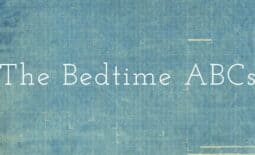Why is routine important?
Routine is really important for humans. Even if you don’t think you stick to a daily routine the chances are you have some routine, you eat 3 meals a day (more than likely around the same time each day), go to bed around the same time and get up at the same time each day.
Many people worry that getting your child on a routine is going to be too restrictive, you’ll have to be at home all day. Never to leave the house anywhere near a nap time!
This isn’t the case. Your routine can be a structured as you want it to be. Though it is important to follow some guidelines.
Daily routine
Wake up times should be the same daily
Yes I know that the thought of waking your child in the morning is not what you want to be doing, but it really is beneficial. Let me explain.
When we are on a routine we want to sleep around the same amount of hours after we got up. Therefor if you child sleeps and extra hour in the morning, their mornings nap will be an hour late, as will their afternoon nap, as will bedtime! The following morning your wake up time will be later. This may not be such a bad thing, but I guarantee that this will happen again and again and before you know it your child is getting up at 10am (how lovely) but not going down to sleep until 10pm! (Not so lovely).
Sleep times should be at the same time daily.
When your child is going to sleep (both during the day and at night) at the same time each day the circadian rhythm is being regulated. This means that your child will begin to get sleepy at the same time, making it easier for them to fall asleep. You also know that they will be ready for sleep and avoiding over tiredness.
You are also making sure your child is getting enough sleep throughout the day, again avoiding over tiredness and over-stimulation.
Meal times should be at the same time daily
Much like sleep we want to try for meal times at the same time each day.
Before-bed routines are equally important. It’s hard for children, no matter how young to go from playing to sleep in a mater of minutes. (There are some children who will sleep anywhere whilst doing anything, this is usually depends on your child’s temperament, you can find out more about how temperament effects sleep HERE), but the majority of children need some help winding down and getting ready for sleep.
Nap routine
A nap routine needs to be between 10 and 15 minutes long to be really effective. You want to go into your child’s room (or the room where they sleep) and do exactly the same thing in exactly the same order.
For example:
- Go into your child’s room and close the shades.
- Sit down together and read a book or two or three. (You may want to finish with the same book each time, that way your child will know when books are over. (12 months + let your child choose the books. If you can let them feel as in control as possible of as many of the ‘negotiable’ things nap time will go a little smoother.)
- Sing a song or two. (12 months + again you can let your child choose the songs.)
- Pop them in to bed.
As your child get’s more and more used to this routine, they will begin to unwind and relax as soon as you go into your child’s room.
12 months + Sometimes the routine stops working. Your child may begin to act up a little during the routine (run around instead of looking at books). If your child does this it’s a good idea to change one aspect of the routine. For example, you may read books sat on the floor instead of the chair, or, sing songs before books.
Changing the routine slightly seems to keep toddlers on their toes and interested in what will come next. You shouldn’t change the routine too often, only when you really need to.
Night routine
You want your nighttime routine to be between 30 and 60 minutes. 30 minutes if you don’t give your child a bath. Around 45 minutes if you do give them a bath.
Much like your nap routine you want it to be predictable. Do the same thing in the same order.
For example:
- Bath (if you have one at his time.)
- Into jammies. (12 months + let your toddler choose their jammies.)
- Milk and brush teeth.
- Read books, finishing with the same book each time. (12 months + let your toddler choose the books.)
- Sing songs. (12 months + let your toddler choose the songs.)
- Quick snuggle.
- Into bed
It’s important to keep things relaxed, quiet and calm an hour or two before you start your bedtime routine. A relaxed and calm child is going to have a far easier time falling asleep, getting a better quality sleep and remaining asleep through the night. That means no rough and tumble time after dinner!
Children who have a consistent bedtime routine established by the time they are 3 months old are more likely to be able to get themselves to sleep and back to sleep without help.
What’s an acceptable wake up time and acceptable bedtime?
It’s something, which is very individual to each family. In my house our acceptable wake up time is 7:05am (it just seems so much more acceptable that 7am!). Other families may have an acceptable wake up time of 6am. Figure out what works for your family. I think 7am (or 7:05am) works well for most families. Personally anything before 6am is just too early (though there are children out there who are up with the lark and are ready to go before 6am.
Every child’s sleep needs are different (much like adults) sleep needs blog postHERE and see which sleep range your child falls into depending on their age.
Some parents like to have more of an evening and others would rather sleep a little later in the mornings. Work out what is important to you. Make sure when setting your acceptable wake up time and bedtime you take into consideration that some children are early risers. There are some things we can do to try and encourage children to sleep later in the morning, but some children just seem to be programmed to get up with the lark.




